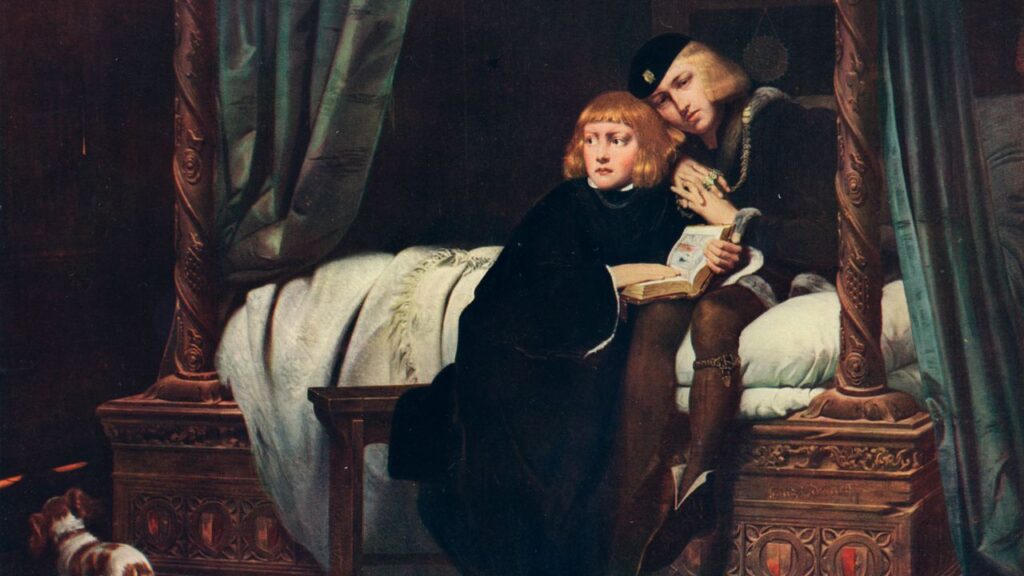The first Duke of York was Edmund of Langley, who was elevated to the role in 1385. The fourth son of King Edward III, Edmund was one of the most trusted advisors to his nephew, King Richard II, often acting as custodian of the realm during Richard’s war campaigns. He would soon commit one of England’s greatest acts of betrayal, however, when he switched allegiances and supported a pretender, Henry Bolingbroke, when he invaded in 1399. The decision was immortalized to the stage by Shakespeare in Richard II, with the Duke of York named as one of the major players in crowning the new Lancastrian regime.
The second Duke of York, Edmund’s son Edward, was also a major political power player. He was a key figure during the reigns of Kings Richard II, Henry IV, and Henry V. He met a grisly end, however, at the Battle of Agincourt in 1415, when he saved the life of Henry V. Whether or not Edward died from a head wound or from being “smoldered to death” among “much heat and pressing” is up for historical debate, though it’s safe to say the Duke died an uncomfortable, if noble, death.
Things were equally as unpleasant for the third Duke of York, Edward’s nephew, Richard. Richard was four years old when he took the title, and later would go on to attempt to usurp the throne from the Lancastrians, without success. During the reign of Henry VI, Richard was among the most powerful men in the country, and claimed to be the rightful holder of the crown due to his family lineage. When he made this case to the Lords, however, he was met with what must have been a very awkward silence. Despite this lack of enthusiasm, it was decreed that the Duke of York could inherit the throne upon Henry’s death. In a cruel twist of fate, Richard was killed just weeks after he was promised kingship, dying in 1460 at the Battle of Wakefield. According to some reports, his enemies mockingly crowned him with bulrushes before beheading him and displaying his severed head on a pike with a paper crown outside Micklegate Bar in York.


